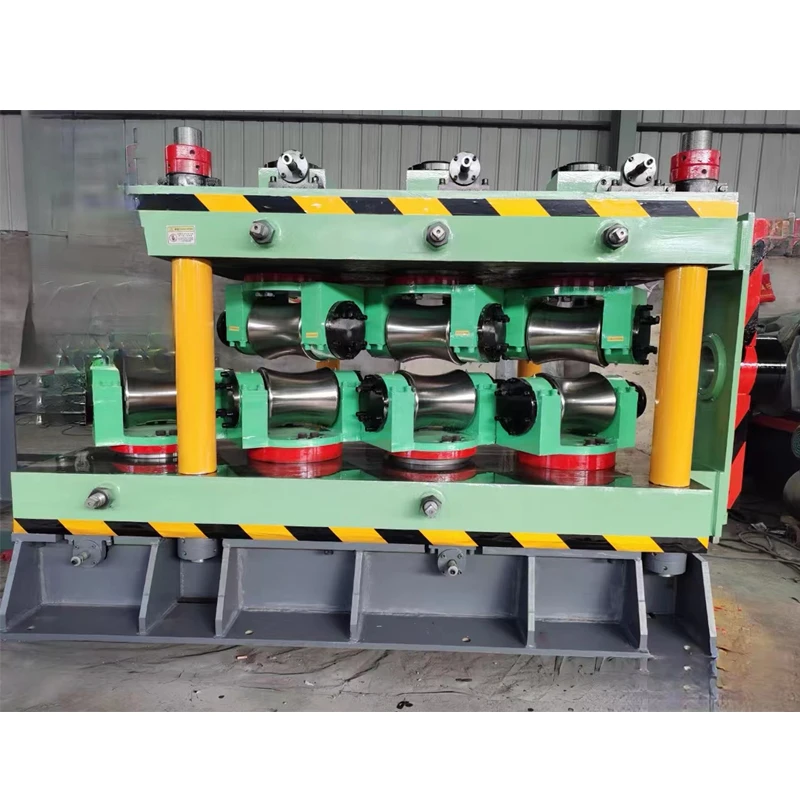Understanding the Cold Rolling Mill Process for Steel Production Efficiency and Quality Improvement
Steel Cold Rolling Mill Process A Comprehensive Overview
The steel cold rolling mill process is a crucial stage in the production of steel products, particularly for those that require a smooth, finished surface, enhanced mechanical properties, and precise dimensions. This process involves the reduction of the thickness of steel sheets or strips at room temperature, which results in superior surface quality and improved metallurgical characteristics. Understanding the intricacies of the cold rolling process is essential for industries relying on high-quality steel.
The Cold Rolling Process
Cold rolling is a metalworking process that involves passing steel through a pair of rollers at ambient temperatures. The primary purpose of cold rolling is to decrease the thickness of the metal while enhancing its overall strength. This is achieved through strain hardening, a phenomenon where the metal becomes stronger and harder as it is mechanically deformed.
The cold rolling process can be broken down into several key stages
1. Preparation of Material Before the cold rolling begins, the raw steel sheets or strips are prepared. This involves ensuring the material is clean and free of any surface contaminants. A preliminary heating stage may also be initiated to remove oxides and other impurities.
2. Rolling The core of the cold rolling process involves the actual rolling of the steel between rollers. Typically, two or more pairs of rollers are used to gradually reduce the thickness of the metal. The rollers exert immense pressure, causing the steel to elongate and thin out. As the steel passes through the rollers, its width may increase, which is typically managed by cutting the material into sections post-processing.
3. Annealing To alleviate the stresses introduced during cold rolling and to refine its microstructure, the steel is often subjected to an annealing process. This involves heating the cold-rolled sheet to a specific temperature and then allowing it to cool. Annealing helps to restore ductility and workability, counteracting some of the hardness achieved during rolling.
4. Finishing Operations After annealing, the cold-rolled steel may undergo additional finishing operations. These can include slitting, shearing, and surface treatments to enhance the material's properties or prepare it for subsequent applications. Surface finishing techniques such as pickling or phosphating may be employed to improve corrosion resistance and aesthetic appearance.
steel cold rolling mill process

5. Quality Control Throughout the cold rolling mill process, rigorous quality control measures are implemented. Parameters such as thickness, surface finish, and mechanical properties are continually monitored to ensure that the final product meets industry standards and customer specifications.
Advantages of Cold Rolling
The cold rolling mill process offers several advantages over hot rolling, particularly in producing thin gauges and high-precision steel products. Some of the key benefits include
- Enhanced Surface Finish Cold rolling results in a smoother surface compared to hot rolled products, making it ideal for applications where aesthetics and surface quality are paramount.
- Improved Dimensional Accuracy Cold rolling allows for tighter thickness tolerances, which is crucial for industries requiring precise measurements.
- Higher Strength The strain hardening effect in cold rolling provides improved mechanical properties, making the steel stronger and more resilient.
- Versatility Cold rolled steel can be used in a wide range of applications, including automotive components, construction materials, and appliance parts.
Conclusion
The steel cold rolling mill process plays a vital role in the production of high-quality steel products that meet the demands of various industries worldwide. By transforming raw steel into a product with enhanced strength, precision, and surface quality, cold rolling contributes significantly to the ongoing advancement of steel manufacturing technology. As industries continue to evolve, the demand for cold-rolled steel remains strong, underscoring the importance of this sophisticated processing technique. Ultimately, understanding the cold rolling process enables manufacturers to choose the right materials for their applications, ensuring durability and performance in finished products.
-
High Frequency Straight Seam Welded Pipe Production Line-BzZhou Xinghua Machinery Equipment Manufacturing Co., LTD.|line pipe steel&welded gas pipeNewsJul.30,2025
-
High Frequency Straight Seam Welded Pipe Production Line-BzZhou Xinghua Machinery Equipment Manufacturing Co., LTD.|High Precision&Automated SolutionsNewsJul.30,2025
-
High Frequency Straight Seam Welded Pipe Production Line - BzZhou Xinghua Machinery Equipment Manufacturing Co., Ltd.NewsJul.30,2025
-
High Frequency Straight Seam Welded Pipe Production Line-BzZhou Xinghua Machinery Equipment Manufacturing Co., LTD.|Precision Welding, High EfficiencyNewsJul.30,2025
-
High Frequency Straight Seam Welded Pipe Production Line|BzZhou Xinghua|Precision Welding&EfficiencyNewsJul.30,2025
-
High Frequency Straight Seam Welded Pipe Production Line - BzZhou Xinghua|Precision Engineering&EfficiencyNewsJul.30,2025


